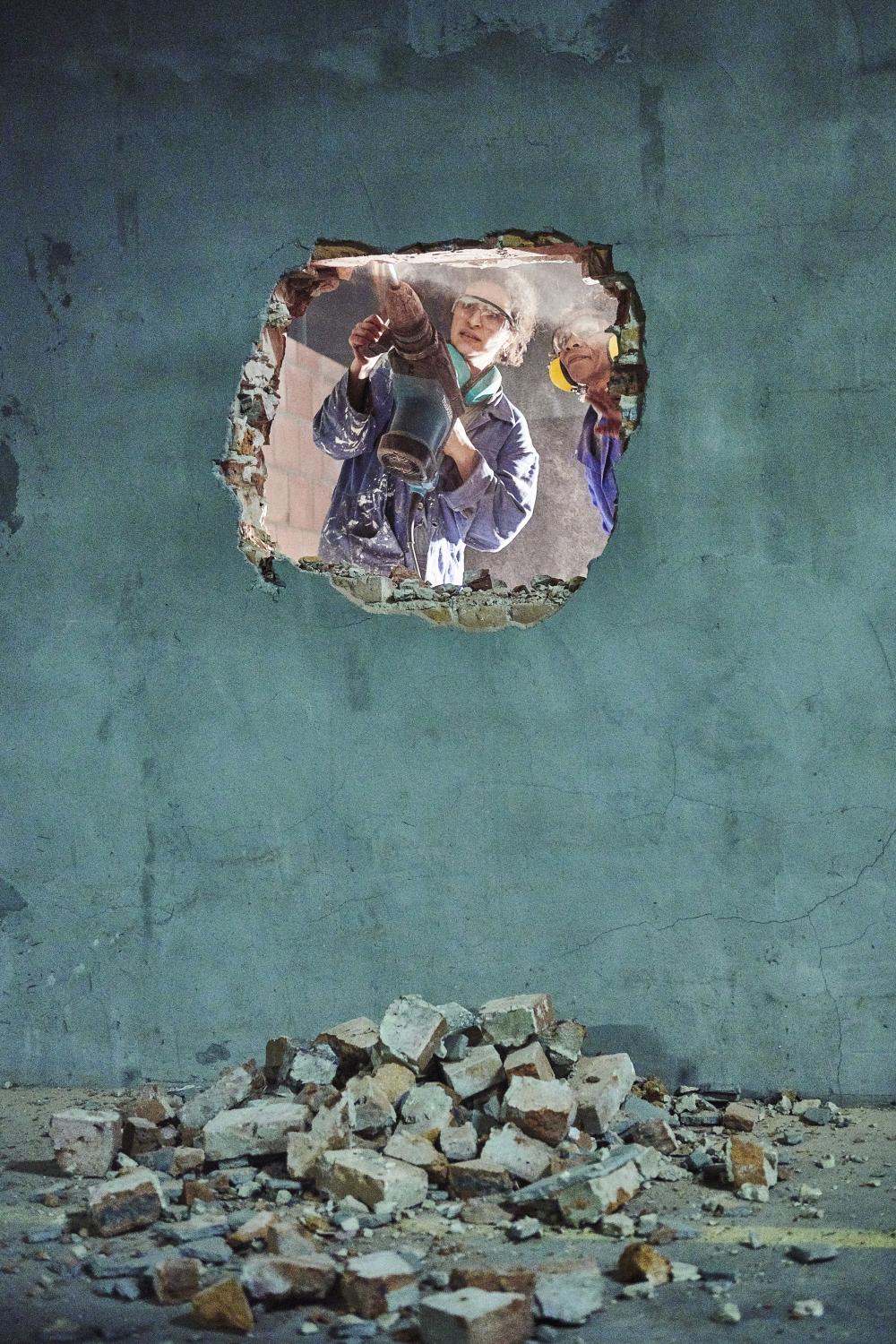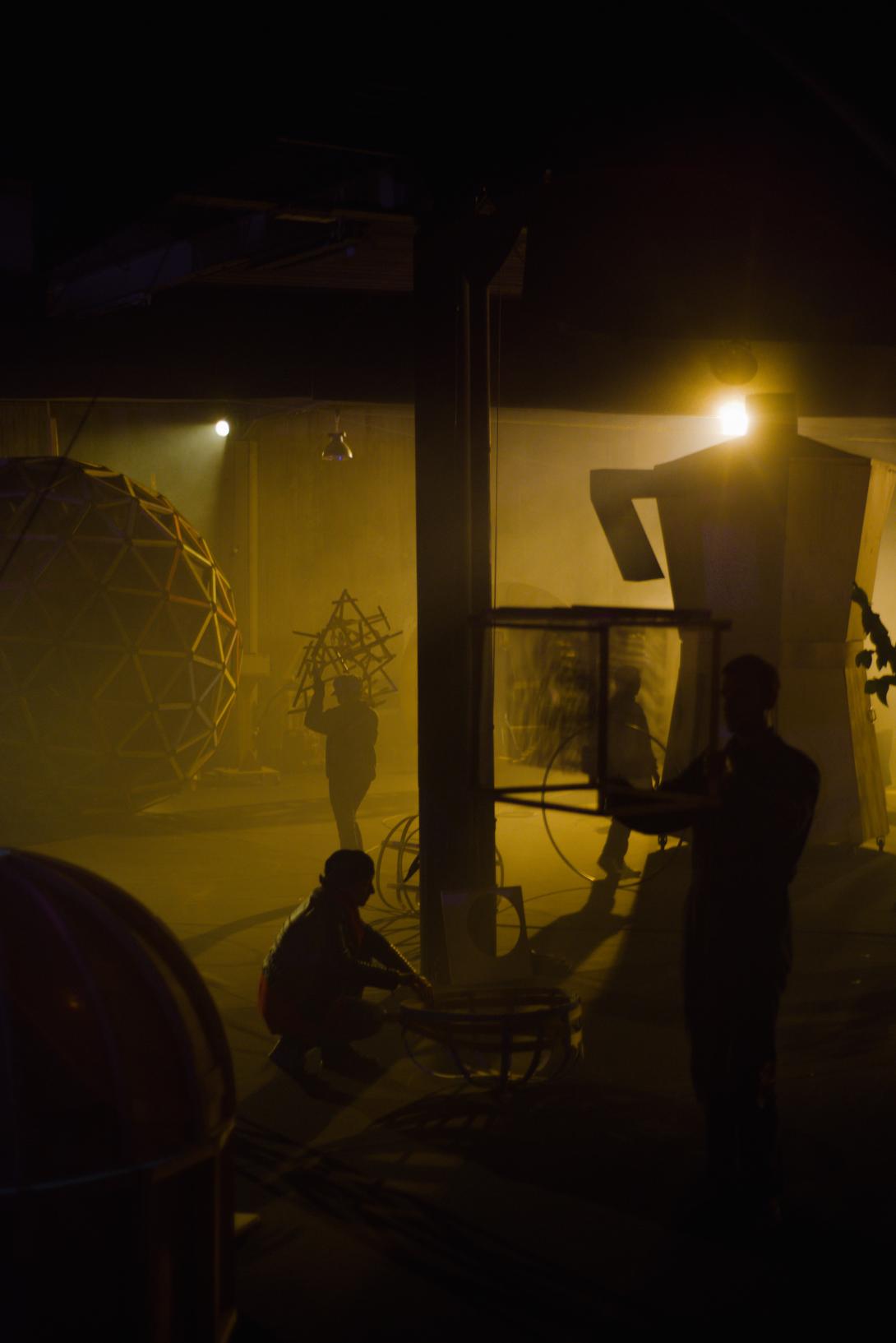Secret Gardens
essay by Guy Gypens for Underneath Which Rivers Flow
1.
One year ago, on 9 February 2018, a federal inspection team flanked by police raided the non-profit workspace and meeting place Globe Aroma. Globe Aroma is an arts centre located in the heart of Brussels that offers newcomers space, time and support to find their place in the city through cultural and artistic exchange. The raid was part of the anti-terrorism operation of the Ministry of Domestic Affairs, which is also known as Jan Jambon’s Canal Plan. The checks were conducted with great thoroughness and even brutality. Three people who did not have the correct identification papers were arrested and detained in the closed centre in Steenokkerzeel. The cultural and socio-cultural world reacted to the raid with horror and condemnation. This Safe Haven, the safe space and the trusting relationships that it fosters had been violated, making the task of investing in con-structive cultural work impossible. The reaction from some political quarters was equally harsh. “They needn’t think they are above the law! If they have nothing to hide then they needn’t fear the raids.”
2.
February 2018 also marked the beginning of the operational process of Underneath Which Rivers Flow, Jozef Wouters’ project organized in close cooperation with newcomers associated with Globe Aroma. Behind the Decoratelier, Wouters had discovered a large, adjacent, abandoned space. At the first meeting with the project group, they knocked a hole through the wall and symbolically ‘occupied’ the empty space as a workspace for the coming year. A new Safe Haven was carefully opened after another one had been violently disrupted.
3.
Both the existing Decoratelier and the space behind it are part of a major urban renewal pro-ject that has been launched in the framework of the Zinneke Sustainable Quarter Contract. The block between Nijverheidskaai, Liverpoolstraat, Heyvaertstraat and Gosseliesstraat is part of the Abattoir Quarter. Until the 1950s, the buildings here were mainly occupied by meat wholesalers. Due to new European health and safety guidelines, many of the meat sellers were forced to leave in the 1980s. From that point on, the empty industrial buildings were gradually occupied by second hand car dealers, many of which are still there. Over the past ten years, there has been heated debate as to the desirability of having the car trade in this area of the city. The Municipality of Molenbeek and the Brussels Capital Region opted for a policy that would move the car trade to the Brussels Docks. The acquisition of the large Libelco Hall – at the centre of the aforementioned block – by the Municipality of Molenbeek in 2015 has to be understood in this context. The plans are to transform the block into a park with a covered public winter garden (in the Libelco Hall), and a crèche, intergenerational residential project, production studios focused on recycling (Cyclo, Atelier Groot Eiland), and the remodelling of the banks of the canal (lowered banks with a kayak quay).
4.
Brussels is not exactly a model of excellent con-temporary urban planning. Since the 1990s, the majority of European cities have capitalized on the economic boom and of local and European development funds to make their centres and outskirts more spatially liveable and economi-cally appealing, but Brussels has tended simply to observe these developments passively. It was as though the city had not processed the traumas of major and merciless interventions, such as the building of the Northern Quarter or the European Quarter, and had developed a deep suspicion to any hint of urban planning. This has gradually changed over the past ten years. The masterplan for the Canal Zone and the recent ambition to redress the drama of the Northern Quarter are just two examples of a new approach.
5.
Brussels can turn its lagging behind other cities to its advantage by learning from their mistakes. Many of the recent urban development projects have been focused on creating an ‘open and transparent city’, but this has often not resulted in more social and cultural inclusion. An ‘open city’ is not necessarily an inclusive city. Public space is all too often perceived as being solely about absolute openness and physical accessibility. From this perspective, isolation and seclusion are considered enemies. But recent research conducted by Metrolab Brussels (1) demonstrates that there is a need for enclaves in the city: more or less secluded spaces where activities can take place and experiences can be shared. Urban inclusion is essentially about creating possibilities for people to participate in the city and its space. Hospitality is a key concept in this regard, and it goes much further than simply removing physical barriers or cultivating a personal moral attitude. A hospitable environment or space for ‘the other’ is inviting and attractive, it opens up possibilities, puts people at ease, and offers shelter and protection. To feel welcome somewhere, you have to be able to arrive somewhere. The gateway to a public space need not always just be open to anybody. Inclusiveness by no means implies or equates to being open and free all the time. Metrolab calls these types of public spaces inclusive enclaves. A key element here is the combination of their capacity to be open and their capacity to be closed. At the same time, they function as safe havens in the city, gateways to the city, and steppingstones to urban districts and territories.
6.
In 2012, the German-Korean philosopher Byung-Chul Han wrote a fascinating essay enti-tled The Transparency Society (2). He states that transparency is about much more than fighting corruption and fostering decent governance. It is about the modern urge to exhibit oneself constantly. He critiques this one-dimensional, disenchanted society in which nothing is left to the imagination. He argues in favour of seclusion, distance, and secrecy. His primary objection to total visibility is that it ultimately comes at the price of freedom. It leads to tyranny in the form of a new kind of panopticon. Control is no longer exercised from one centre or perspective, but has become aperspectival and all-encompassing. “The society of control achieves perfection when its inhabitants do not communicate because of external constraint but out of inner need – that is, when the fear of giving up a private and intimate sphere yields to the need to put oneself on display shamelessly.” Han is referring here, of course, to the digital world and our exhibitionism on social media, but this line of thought can be applied to public spaces just as easily. Nowadays, parks are designed to make it almost completely impossible to disappear or conceal yourself in them. Public space should be neutral, open and transparent. Everything and everyone should be visible and readable so that the total surveillance of actions and behaviours can be guaranteed. “But”, Han wonders, “is freedom of action not fostered by trust, and isn’t trust only possible in a state of knowing and not-knowing? Trust implies building a positive relationship with the other despite the not-knowing. Where transparency prevails, no room for trust exists. One should not say: ‘transparency creates trust’, but: ‘transparency dismantles trust’. The demand for transparency grows louder precisely when trust no longer prevails.”
7.
When the project group of Underneath Which Rivers Flow entered their new, secret work-space, it was made clear to them that their workspace would become part of a public park in the near future. The question was how they – as newcomers to the city – thought about that future park. What would be needed to make it genuinely hospitable? How might the park win their trust? They were given the opportunity to design their own Secret Garden in the space behind Decoratlier. A safe, secret place as the anticipation of a future public space. Building Out Loud is how Jozef Wouters describes his practice. To design while building, without a preconceived plan and free from any determining power structures. The materials are reused and recycled to avoid money becoming a determining power factor. In a space that is big enough to allow simultaneous imagination and construction. And at the end of the process, the group is free to decide for themselves whether and to what extent they want to open their Secret Garden up to the public. Which audience will they allow in and how will they be allowed in?
8.
For a whole year, the space behind the Deco-ratelier was a nascent inclusive enclave. Now all it needs is the real park.

